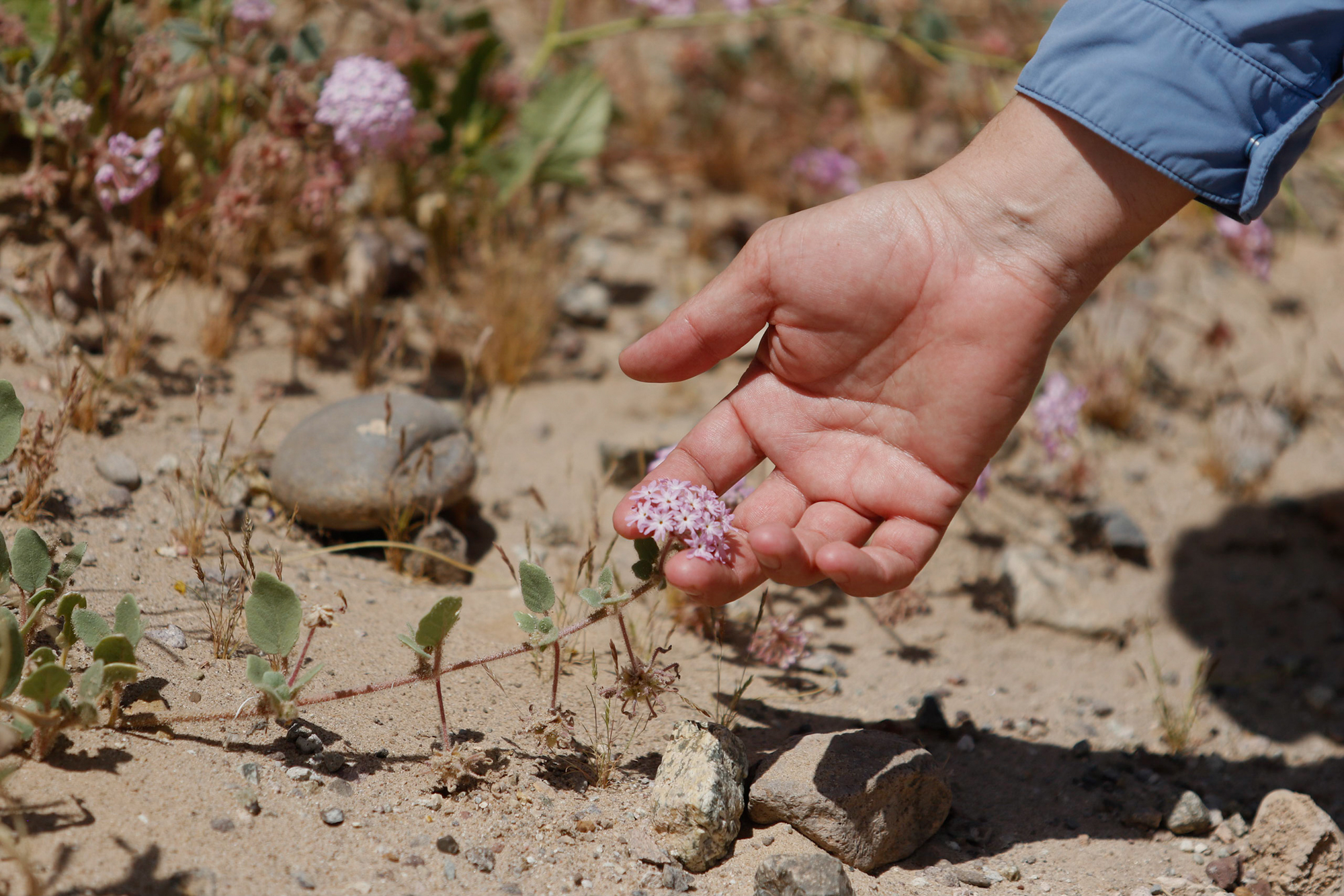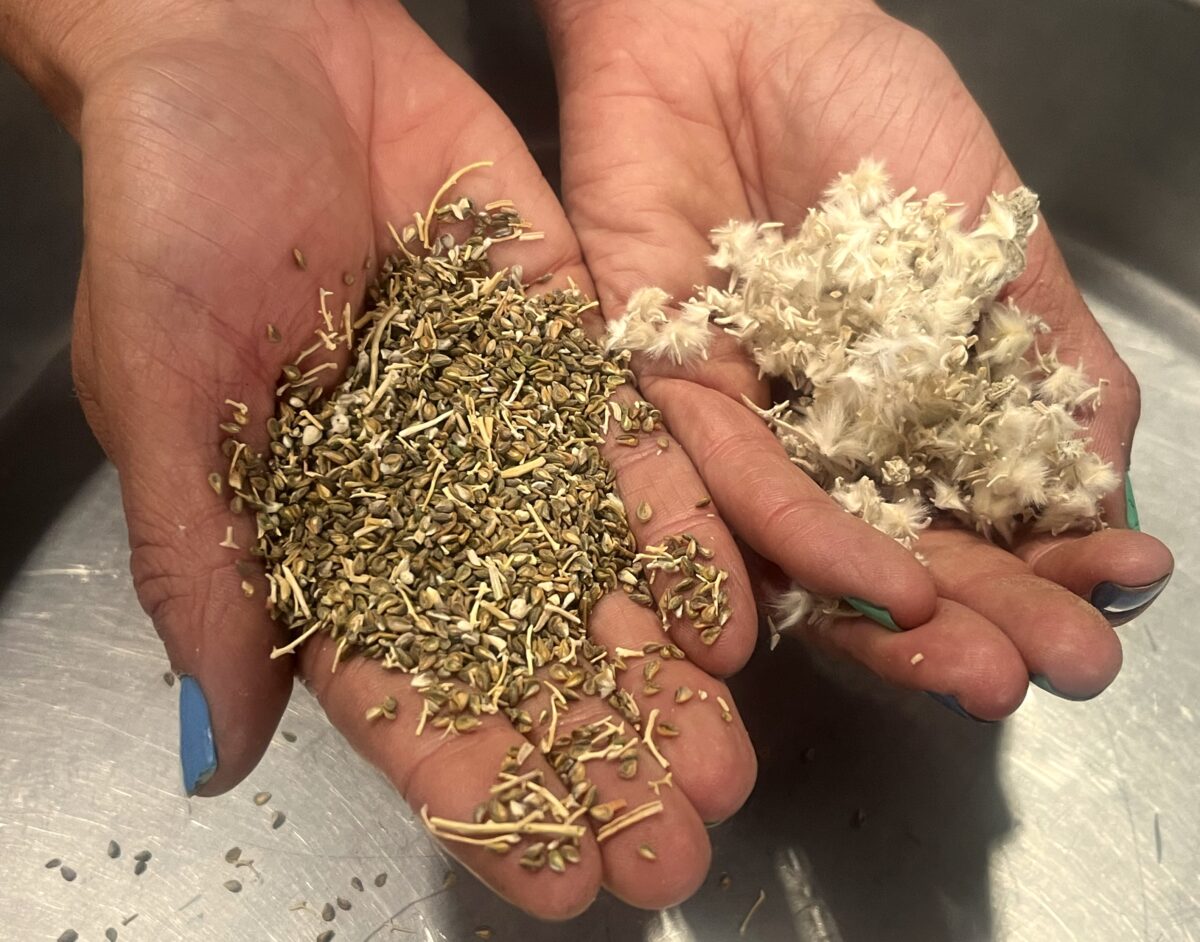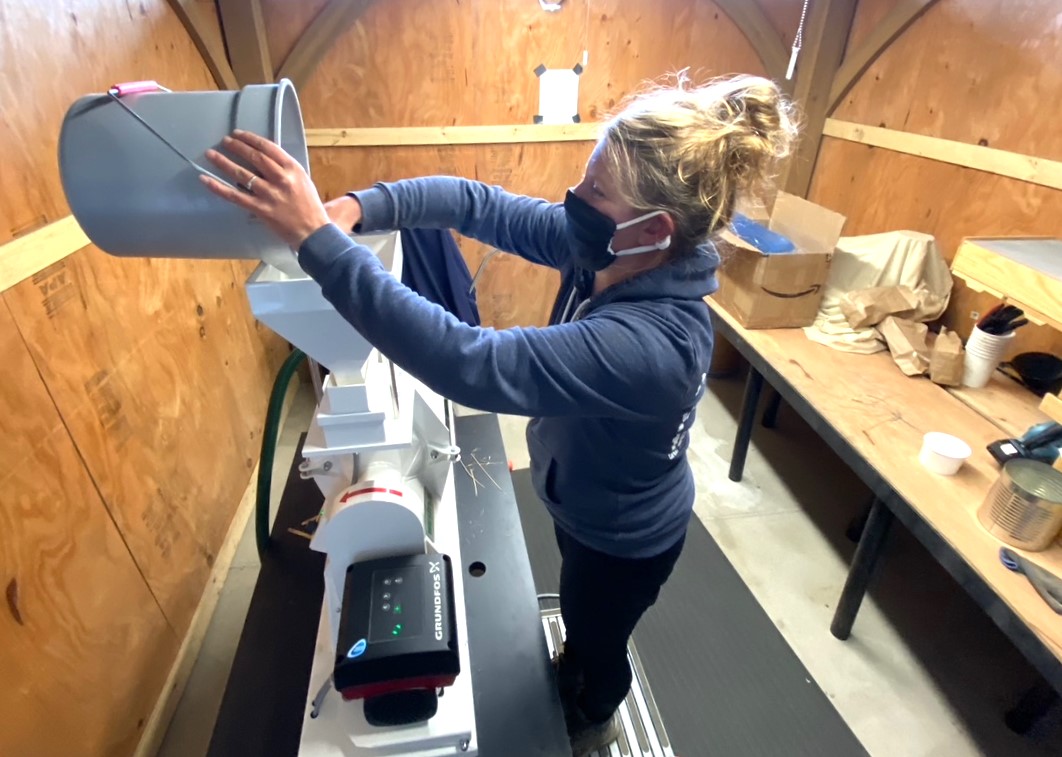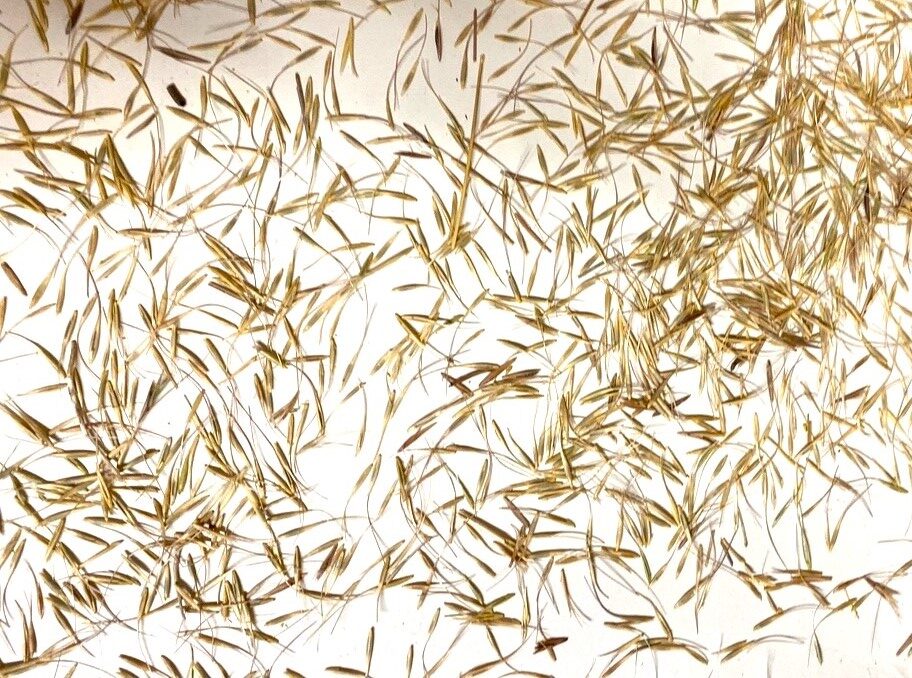Indy Environment: Wildfires, cheatgrass have Nevada feeling the need for seed

Good morning, and welcome to the Indy Environment newsletter. I'm Amy Alonzo, the environment reporter for The Indy.
Growing a backyard summer garden can be as simple as ordering seed packets online or swinging by the local nursery.
But for land managers tasked with revegetating landscapes after wildfires or other events that severely alter landscapes, planting is not so simple.
Access to locally sourced native seeds is limited, and seeds that will thrive in Nevada’s arid environment are particularly hard to come by.
State, federal and local groups are working to address the issue nationwide, especially in the Great Basin.
As always, we want to hear from readers. Let us know what you’re seeing on the ground and how policies are affecting you. Email tips to me at [email protected].
To get this newsletter in your inbox, subscribe here.

With nearly 3,200 native plant species, the Great Basin is an ecologically diverse region. But when a wildfire burns through, it isn’t easy for many of those native species to rebound.
Often, a cheatgrass monoculture takes over, reducing biodiversity. During the last century, cheatgrass — an invasive species that originated in Europe — has taken over 17 million acres of the Great Basin.
Reseeding and replanting with native species after a fire can help mitigate the cheatgrass invasion — as long as there are native seeds available.
Millions of pounds of seed are used every year to replant after fires or to offset disturbances from mines or other development. However, there is a critical shortage nationwide of native plant seeds; in Nevada, that problem is exacerbated by a lack of climate-adapted seed suitable for planting in the nation’s most arid state.
“Seeds don’t just fall from the sky into your lap. You can’t just go buy them,” said Sarah Kulpa, restoration ecologist and botanist for the U.S. Fish and Wildlife Service. “Restoring native plant communities isn’t as simple as going to Home Depot and buying a bag of seed.”
There are no commercial native seed growers in Nevada and only a limited number of seed processing and storage facilities. Seeds processed in Northern Nevada likely go through UNR’s native seed processing center, an operation that, tucked in a closet-sized room and a makeshift outbuilding at the university’s field laboratory, is simultaneously small scale but also larger than most others in the state.
Seeds that are used for revegetation efforts in Nevada are often sourced from areas such as Montana and Washington and are better suited to cooler and wetter growing conditions.
But a slew of partnerships across state and federal agencies, tribes and nonprofit groups are working to address the problem, pushing to establish a network of local native seed growers, investing in seed cleaning and processing infrastructure and building up awareness of the issue.
“We’re surrounded by all these people working on seeds, but Nevada has been excluded,” said Beth Leger, a foundation professor in UNR’s department of biology. “Nobody has been worrying about Nevada. Now, we are worrying about Nevada.”
Preserving the evolutionary history of the Great Basin
Following extensive wildfires in 1999 and 2000, Congress directed the Bureau of Land Management and U.S. Forest Service to develop programming to provide a nationwide native seed program.
In 2001, the federal Seeds of Success program was established to collect and preserve seeds, and in 2015, the National Seed Strategy, a collaboration between hundreds of agencies and partners to improve seed supplies and coordinate restoration efforts, was formalized. Shortly thereafter, Nevada established its own Nevada Native Seed Partnership and Nevada Seed Strategy to address bottlenecks at the regional level. It’s the first state-specific strategy in the U.S. and is tailored to Nevada’s needs.
A tangled web of groups at the federal, state and tribal levels, as well as nonprofit organizations, are now working to shore up native seed supply — a process that includes cleaning, processing, growing and storing seeds, with a new focus on producing seeds that can withstand the harsh growing conditions of the Great Basin.
The mishmash of groups working together is like a stack of Swiss cheese, Leger said — with enough partners working together, any holes in programming are eventually covered up.
The all-hands-on-deck effort in Nevada is needed because there isn’t nearly enough manpower or infrastructure to collect, clean and store seeds from native species to use in restoration efforts, according to Leger and Shannon Swim, manager of UNR’s native seed processing center.
“The Nevada Seed Strategy didn’t go into effect until 2017. We’ve needed all the seed for a long time,” Swim said. “If you think of the level of disturbance going on in the Great Basin with larger wildfires that just keep getting bigger and more frequent … Now we need what we needed, plus a lot more. And we don’t have it.”
Earlier this year, the Nevada Native Seed Partnership received $3.7 million in federal funding, including:
- $1.4 million for seed collection
- $1.2 million for seed production
- Nearly $550,000 to establish an equipment network to support native seed growers
- More than $500,000 for seed cleaning and storage
That funding is helping nonprofit members of the partnership — the Walker Basin Conservancy is modeling an equipment sharing project in the Yerington area to encourage interest in native seed production, and The Nature Conservancy is studying water consumption differences between growing alfalfa and native seeds.
And more boots will get on the ground to collect seeds.
“Wildland seed collection preserves the evolutionary history of the Great Basin,” Leger said. It is a small part of the process, “but without it, nothing else matters.”

Eliminating diversity
Wildfire is largely recognized as beneficial to landscapes, but when high-severity fires burn through, biodiversity declines.
When the Martin Fire burned across the Winnemucca area in 2018, it charred more than 400,000 acres. The largest fire in Nevada’s history was unique because it burned largely virgin sagebrush habitat.
“It wasn’t just a cheatgrass monoculture,” Kulpa said.
According to the U.S. Geological Survey, an average of 1.3 million acres of sagebrush have been lost or degraded annually during the last 20 years. In 2019, one of the agency’s scientists described the recovery of sagebrush habitat after a wildfire as “one of the largest, if not the largest, ecosystem restoration challenges in the U.S.”
Sagebrush is not fire tolerant, and the constant cycle of burning, cheatgrass growing where the sage once stood, then burning again, annihilates the natural seed bank, Kulpa said. “With this constant fire cycle, it’s eliminating all diversity from the landscape.”
And, while sagebrush is slow to regrow after a fire, cheatgrass grows rapidly, changing the forage wildlife and ranchers rely on. But cheatgrass is nutritionally deficient as feed for wildlife and domestic livestock, and it burns easily.
A 2019 study by scientists at UC Davis looking at high-severity fires in wooded areas of the Sierra Nevada described the process as a “feedback-loop” that prevents plant recovery.
‘Our Western values are based on native plants’
A circle of states focusing on native seeds surrounds Nevada, Leger said, but “if you look at the location of the seed centers, they’ve surrounded the Great Basin but aren’t really in it … We are very late to the game.”
At UNR, Swim, Leger and others are working to build up a repository of seeds that are processed, cleaned and ready for distribution.
Housed in a closet-sized room and a makeshift outdoor workspace, UNR has the most versatile seed cleaning facility in the state.
Collected seeds are deposited at the facility with other bits of plant matter and unwanted seeds mixed in. Through a simple but tedious process, the seeds are processed, sorted and cleaned. The facility currently has approximately 800 pounds of seed stored and available for distribution to in-state partners and out-of-state growers who will, after planting the seeds, eventually harvest a larger quantity of seeds from the mature plants. Those seeds will then be stored for restoration efforts.
The whole process of collecting, cleaning, growing and harvesting seeds can take five to 10 years, Kulpa said, and although each project is different, reseeding one acre of land generally requires somewhere between 10 to 15 pounds of native seed.
“So many of our Western values are based on native plants,” Kulpa added. “Our ranching values, our recreation values, people who travel across looking for super blooms … these things are all there because of native plants.”

Here’s what else I’m reading (and listening to) this week:
The Los Angeles Times looks at the U.S. Drought Monitor’s struggle to keep up with climate change.
Beatty’s unofficial mascot, the Amargosa toad, could receive federal protections, the Las Vegas Review-Journal reports.
There’s a decent chance Lake Mead’s water levels could reach a record low, according to Newsweek.
The Nevada Occupational Safety and Health Administration is working on requirements that would force businesses to set their own rules for heat, according to the Las Vegas Review-Journal.
